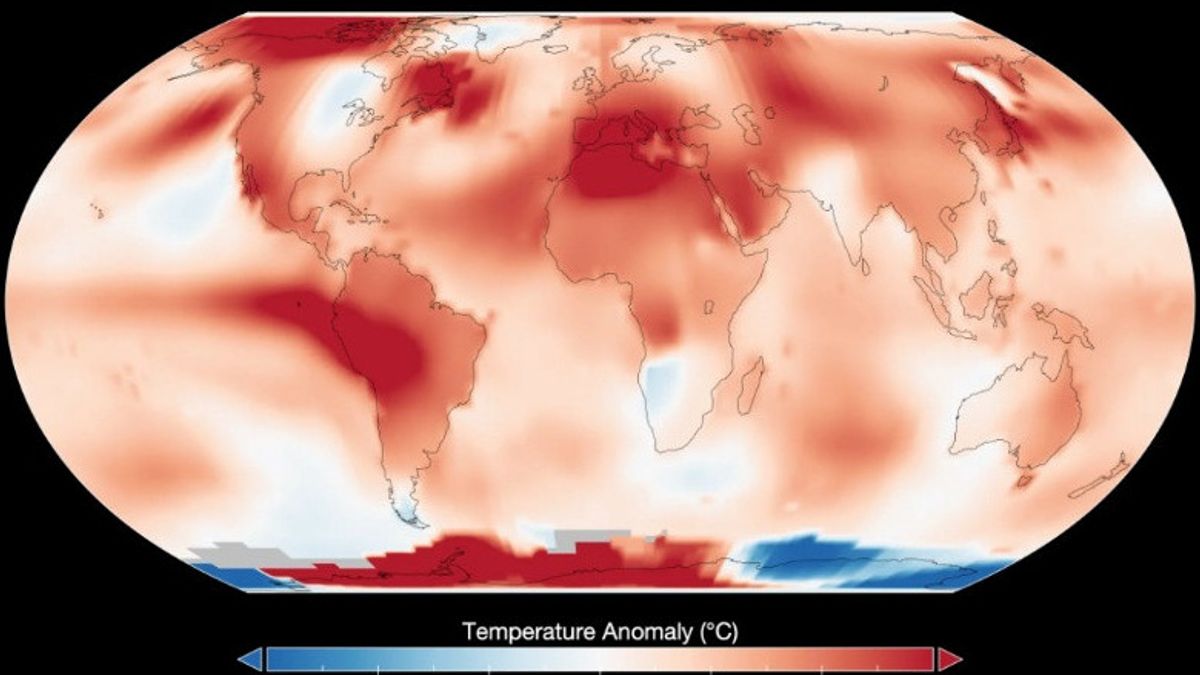JAKARTA - Scientists from the American Aeronautics and Space Agency (NASA) stated that July 2023 is the hottest compared to other months on a global temperature record.
NASA data confirms what billions of people around the world really feel, the temperature in July 2023 makes it the hottest month on record. In every corner of the country, Americans are currently experiencing the immediate impact of the climate crisis, underlining the urgency of the historic climate agenda of US President Joe Biden, "said NASA Administrator Bill Nelson.
Based on NASA's Goddard Institute for Space Studies (GISS) analysis, quoted on Tuesday, August 15, the temperature in July 2023 was 0.43 degrees Fahrenheit warmer than any other July on record, and the 2.1 Fahrenheit was warmer than the July average between 1951 and 1980.
The GISS analysis has research goals at long-term temperature changes over decades and centuries, and the basic period remains a consistent anomaly over time.
Normal temperatures are determined by decades or more, usually 30 years. "The science is clear. We have to act now to protect our community and planet, that's the only thing we have," said Nelson.
Some South America, North Africa, North America, and the Antarctic Peninsula are very hot, experiencing an increase in temperatures of around 7.2 Fahrenheit above average.
Overall, this summer's extreme heat put tens of millions of people under heat warnings and was linked to hundreds of illnesses, even deaths.
July record-breaking continues the long-term trend of human-driven warming, mainly driven by greenhouse gas emissions that have been proven over the past four decades.
According to NASA data, July five is the hottest since 1880, all of them have occurred in the last five years. "Climate change affects people and ecosystems around the world, and we expect a lot of this impact to increase with continued warming," said chief scientist and senior climate adviser at NASA Headquarters.
"Our agency is observing climate change, its effects, and its triggers, such as greenhouse gases, and we are committed to providing this information to help people plan the future."
NASA compiled notes armed with surface air temperature data from tens of thousands of metrological stations, as well as sea surface temperature data obtained by ship-based instruments and buoys.
اقرأ أيضا:
The raw data is then analyzed using a method that takes into account varying temperature station spacings around the world and for urban warming effects that can distort calculations.
"July it's not just warmer than July before it's the warmest month on our record, since 1880," said GISS Director Gavin Schmidt.
Scientifically, this is clearly not normal. Worrying warming around the world is driven primarily by human-induced greenhouse gas emissions. And the rise in the average temperature triggers extreme heat that is dangerous for people here, at home and around the world," he added.
The high sea surface temperature also contributes to a record warmness in July. NASA's analysis shows that the warm sea temperature, especially in the eastern tropical Pacific, is evidence of El Nino starting to develop in May 2023.
Phenomenon such as El Nino or La Nina, which warms or cools the tropical Pacific Ocean, can contribute in small amounts within a year and the following year variability in global temperatures.
However, that contribution is usually not felt when El Nino begins to thrive in the summer in the Northern Hemisphere. NASA expects to see the biggest impact of El Nino in February, March, and April 2024.
The English, Chinese, Japanese, Arabic, and French versions are automatically generated by the AI. So there may still be inaccuracies in translating, please always see Indonesian as our main language. (system supported by DigitalSiber.id)


















